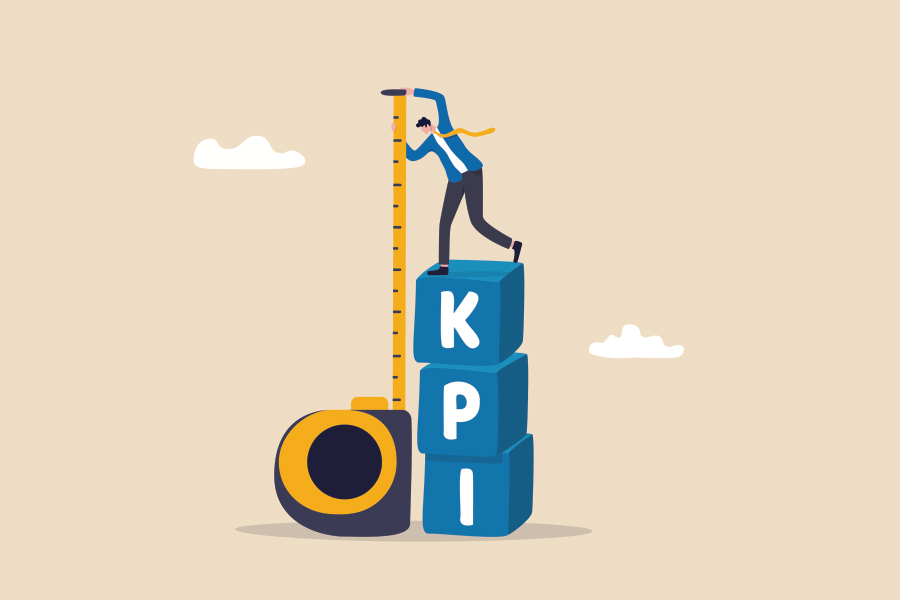I recently had a conversation with an industry colleague preparing to moderate a panel on four of the biggest issues in business travel right now: AI, duty of care, distribution, and policy. As we talked, we stumbled onto an important point – most of the KPIs we’ve relied on for decades don’t really fit anymore. The old scorecards no longer tell the full story of what matters in a modern travel program.
Back in the day, KPIs were simple. I can remember measuring things like how quickly the TMC answered the phone or how many millions in savings I delivered each year. Those metrics weren’t wrong as they reflected the priorities of their time. Leadership wanted cost reduction and proof that the program was functioning smoothly, and that’s exactly what those KPIs delivered.
But business travel has changed. Companies today face new dynamics: Employees want more choice and flexibility, AI is reshaping how service is delivered, and distribution is breaking open in ways that make “program leakage” a more complicated concept. In short, we’re managing travel in a different world, so we need a different way to measure it.
Meaningful Measures
Let’s take AI as an example. Everyone in the industry is talking about it, but how do you know if it’s actually helping your program? Instead of counting the number of chatbot interactions or time saved, what if the KPI measured adoption (how many travelers are actively using AI-powered tools) and accuracy (how often do those tools deliver the right result)? Those metrics tie directly to ROI and show whether the technology is actually adding value.
Or consider distribution. For years, leakage was the enemy, and the KPI was all about how many bookings were captured inside the program. But travelers today expect broad, fresh content at their fingertips. Maybe a better KPI is content coverage, such as are the flights, hotels, and rail options your travelers want actually available in your booking channels? If yes, adoption goes up. With adoption comes consolidated data, stronger supplier leverage, and yes, savings. The difference is, you’re measuring the root cause, not just the symptom.
Duty of care is also evolving. It’s not just about how quickly you can locate travelers in an emergency anymore. Travelers want to feel safe and supported every step of the way. That means adding KPIs that measure things like pre-trip risk communication, traveler engagement with safety tools, and even traveler sentiment around personal security. Those metrics tell you more about the program’s true effectiveness than a stopwatch ever could.
And then there’s policy. Traditional KPIs around compliance tended to be black-and-white: How many violations, how much overspending. But with more companies shifting to flexible, traveler-friendly policies, it may be more useful to measure outcomes. Did the new sustainability policy increase the number of rail bookings versus short-haul flights? Did flexibility reduce complaints and escalations? Did traveler satisfaction rise when they had more choice? Those are results that speak to both cost and culture.
Remapping KPIs
Here’s a framework for building tomorrow’s KPIs:
• Tie them to strategy. If your company values savings, measure savings. If it values employee retention, measure traveler experience. If sustainability is the goal, measure adoption of greener choices.
• Measure adoption. New tools and services are worthless if employees don’t use them. Engagement is often the best early indicator of ROI.
• Think traveler-first. Focus on the employee experience, ease, satisfaction, productivity, not just whether they followed the rules.
• Highlight value creation. Look at how the program contributes to bigger business outcomes, from supplier leverage to happier, more productive employees.
• Stay adaptable. KPIs need to evolve as fast as the industry does. What matters this year may be irrelevant in three years.
The real beauty of updating KPIs is that when you measure the right things, the traditional benefits, like savings, often fall into place. If travelers like the program, they’ll use it. Higher adoption gives you better data. Better data improves your supplier negotiations. Better negotiations deliver savings. It’s a virtuous cycle that starts not with cost, but with relevance.
So, are KPIs dead? Not exactly. But they do need a serious reboot. Yesterday’s measurements won’t capture today’s realities or tomorrow’s opportunities. The best travel managers are the ones who know how to measure what really matters: Not just compliance and cost, but culture, technology, and traveler experience.
Here’s my challenge: Before your next leadership meeting, look at your KPI list and ask, “Does this reflect the program I have today or the one I want to build for tomorrow?” If it’s the former, it may be time for an upgrade.
Because no one ever impressed their CEO with a green checkmark next to “average hold time.”
Greeley Koch is Managing Director of 490 Consulting, where he advises corporations, travel management companies, airlines, lodging providers, and technology firms on strategic transformation. He also serves as Director of Travel for Acquis Consulting Group, leading initiatives to drive cost savings, efficiencies, and innovation in corporate travel and meetings management. As an adjunct professor at NYU’s Tisch Center of Hospitality, Greeley brings real-world insights into the classroom, mentoring future leaders and connecting academic learning with the evolving corporate travel marketplace.











